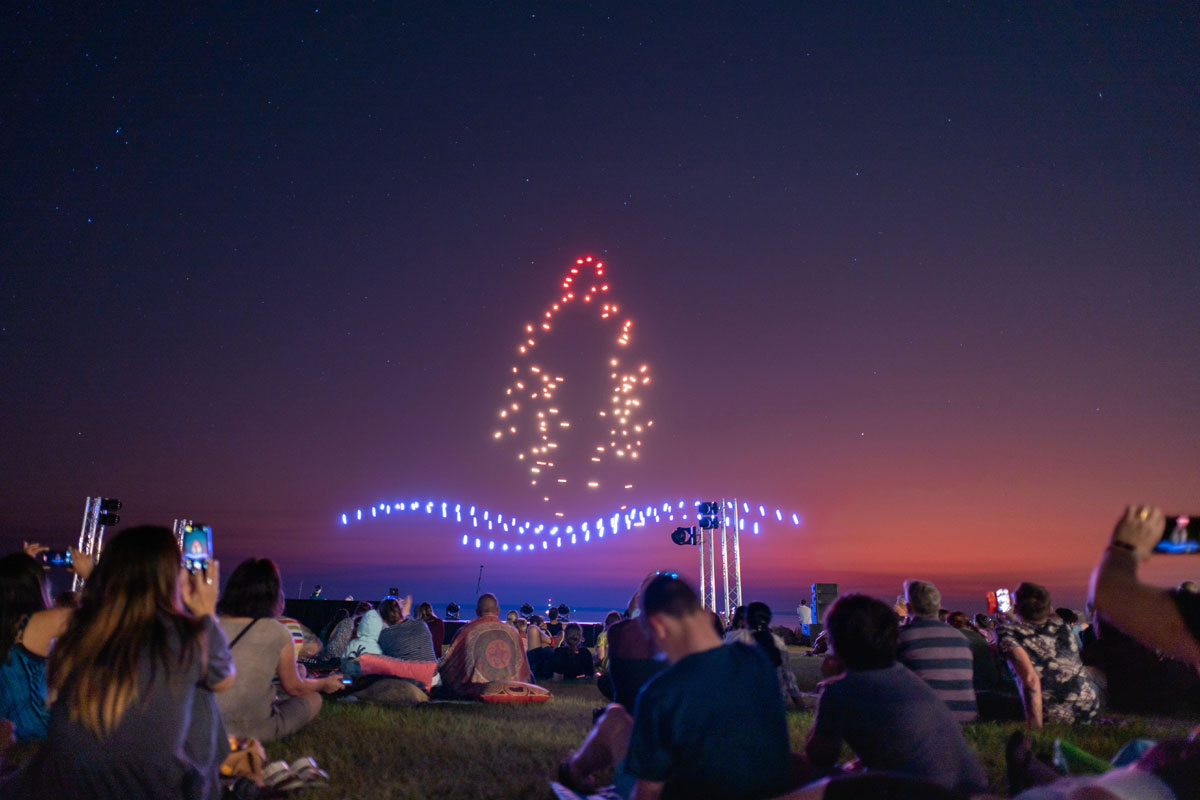
Fireworks have been dominantly and traditionally used to entertain and enhance most evening events, celebrations, and festivities for many years though they have been known to cause harmful effects. Loud noises, fire, property damage, waste, injury, air pollution, and fear among nearby household pets and natural wildlife are some of the many harmful effects of fireworks. A study published in the International Journal of Environmental Research and Public Health showed that fireworks smoke might create an additional—albeit short-term—health risk for communities already disproportionately burdened by air pollution. Thanks to advancements in technology, we now have a new mesmerizing, powerful, and emerging alternative option to fireworks: drone light shows
This article will discuss what drone light shows are all about, their benefits, limitations, and disadvantages.
What are Drone Light Shows?
Drone light shows are performed by illuminated, synchronized, and choreographed groups of 100, 300, 500, 2,000, or more drones (often quadcopters) that arrange themselves into various aerial formations. A computer program can recreate almost any image or animated movement in the sky, turning graphics into flight commands and communicating them to drones.
With the vision and contributions of the researchers, engineers, and artists of the Ars Electronica Futurelab, the world’s first large-scale outdoor formation drone flight illuminated the night sky on September 2012 in Linz, Austria, as part and centerpiece of the Klangwolke. Since then, drone light shows have been used in many events, such as the 2017 Super Bowl halftime, the 2018 Winter Olympics, New Year, and other worldwide celebrations.

Creating a drone light show is simple these days. Starting with a storyboard timeline showing the desired images and effects, a design team uses software to animate the storyboard into synchronized flight paths for each drone, usually accompanied by a custom soundtrack for the show. The complete shows are then sent to the drones via radio signal from a ground control station operated by a pilot. Once the pilot confirms that everything is safe and ready to go, the show starts, and the drones take off to draw the storyboard in the sky. Creating the display requires geofencing and location-sensing technology, keeping the drones in line and preventing collisions.
Abundant Benefits
The key benefits of using drones versus fireworks are environmental and tremendous. No pollution or hazardous waste, and with much less noise, the drone light shows are much more beneficial to nearby audiences, household pets, wildlife, and the environment. Unlike fireworks, which can only be used once per show, drones are reusable, eco-friendly, cost-efficient, and effective.
Additionally, drones have a greater range of creative effects than fireworks, and their capacity for sophisticated choreography gives them more potential for storytelling and entertainment in the sky. Drones can also be deployed in more constrained environments where fireworks are never allowed.
Limitations and Disadvantages
Since the emergence of drone light shows is fairly recent, there are limitations and disadvantages to be aware of. Much like fireworks, drone light shows rely on the cover of darkness and good weather for shows to be visible. The event environment must also have enough space to accommodate a fleet of drones and not have any metal elements that may interfere with the signals. Regulatory approval, safety requirements, and technical preparation can also be cost and labor-intensive.
The biggest limitations on drone light shows, which has a huge potential for growth and improvement, are the different technologies required to execute a show successfully. The drone hardware material, weight, features, and battery life can significantly impact how long a show can be executed and what creative storyboards can be achieved. Improvements in design tools and software that help design the show can increase the creative options used.

How Ambiq is Helping
The products delivered at Ambiq® are built on the key principles that made the microprocessor so revolutionary in the first place: the idea of expanding possibilities while requiring less power and resources. In doing so, Ambiq responds to the priorities of the current market and develops microprocessors that set trends, enable faster technological advancements, and give users the features they’ve been asking for.
The ultra-low power solutions at Ambiq, including SPOT® and the Apollo4 family of SoCs, reduce the power consumption of edge devices and make it a possibility for the billions of battery-powered, wireless IoT devices that exist around the globe.


